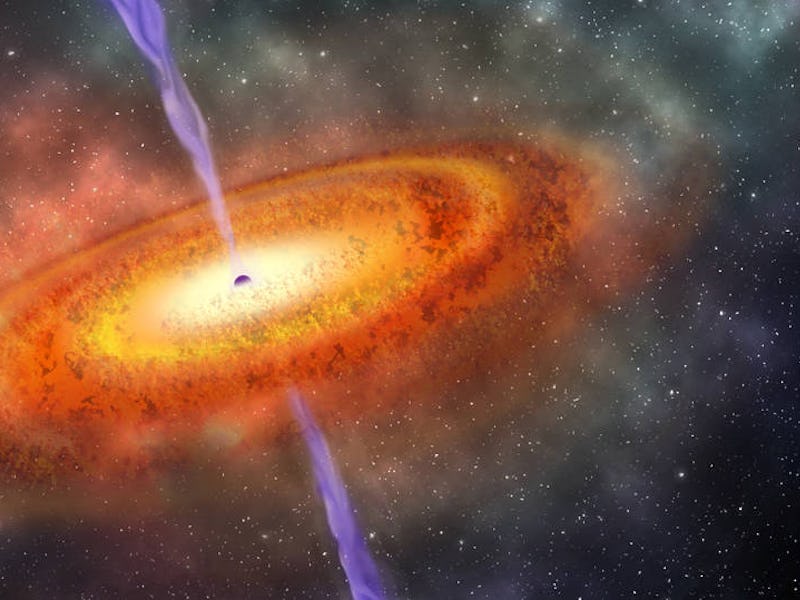Black holes are the Very Hungry Caterpillars of the Universe — this is known. But a newly discovered supermassive black hole is actually so very large and so very hungry it’s changing our perception of these voracious beasts.
Researchers found the black hole in question by using data from NASA’s Wide-field Infrared Survey Explorer (WISE) along other with ground-based surveys. It’s 800 million times the mass of our sun, but that’s not even close to the weirdest thing about it. The team’s findings were published Wednesday in Nature.
The team discovered this supermassive black hole powers a quasar called ULAS J1120+0641. Quasars are some of the brightest objects in the universe. As mass collapses into a black hole, the gravitational stresses release intense jets of energy. That’s what we observe as a quasar.
Illustration by Robin Dienel, courtesy of Carnegie Institution for Science.
In this case, researchers believe the hungry black hole was able to reach its enormous size relatively quickly because of certain conditions when the universe was about five percent of its current age.
“Gathering all this mass in fewer than 690 million years is an enormous challenge for theories of supermassive black hole growth,” Carnegie astronomer Eduardo Bañados said in a statement.
This discovery could help scientists get a better understanding of what the early universe was like. Using redshift, the team determined this quasar is 13 billion light-years away, so in effect, it’s a glimpse into the very distant past.
The hydrogen from the quasar seems to be neutral hydrogen gas, which could tell us about a time when the universe was very dark. After the big bang, particles were all crazy and energized to do…whatever it was they were doing. But 400,000 years after the Big Bang, these particles calmed down a bit and became neutral hydrogen gas. According to NASA, “much of the hydrogen surrounding the newly discovered quasar is neutral,” so it could be worth investigating in order to learn more about the early universe.
“With several next-generation, even-more-sensitive facilities currently being built, we can expect many exciting discoveries in the very early universe in the coming years,” the study’s co-author, Daniel Stern of NASA’s Jet Propulsion Laboratory, said in a statement.
While we might not get to travel back in time to check out the early universe, investigating quasars is a solid second option. Besides, the universe doesn’t seem like it was much of a good time back in the day. Horrifying, sure, and wondrous. But not fun.
